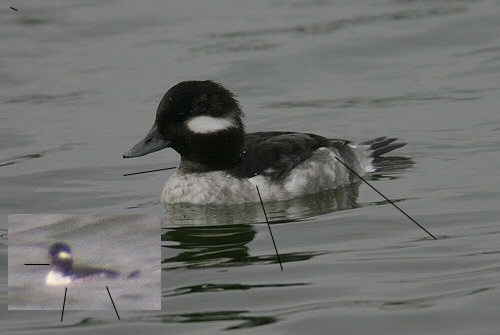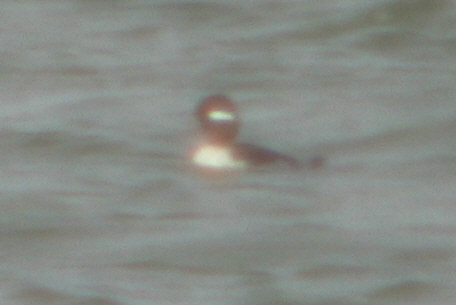5 November 2004, Muiden NH; © Enno Ebels.

Photo by © Chris van Rijswijk, inset by © Laurens Steijn.
It was accepted as the first record for the Netherlands. A notorious case was a record in February 1986, when a male stayed at Cuijck, Noord-Brabant. It was already on the lists of all twitchers at that time, but then a letter by a Belgium birder reached the Dutch Rarity Committee. He stated he had seen a pink-orange ring around it's legs. It was rejected, considered to be an escape. Later, more records appeared, but all were rejected and considered escapes. The bird from Barendrecht returned for all consecutive winters at least till 2011 and turned into a beautiful adult male.
Do you want to go to the main-index, the 2004-index or the next new species,
the Pine Grosbeak?

